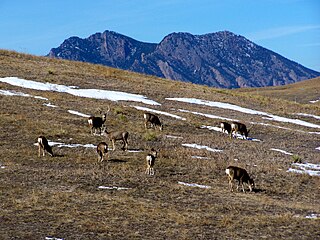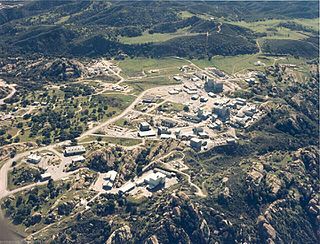
Hazardous waste is waste that has substantial or potential threats to public health or the environment. Hazardous waste is a type of dangerous goods. They usually have one or more of the following hazardous traits: ignitability, reactivity, corrosivity, toxicity. Listed hazardous wastes are materials specifically listed by regulatory authorities as hazardous wastes which are from non-specific sources, specific sources, or discarded chemical products. Hazardous wastes may be found in different physical states such as gaseous, liquids, or solids. A hazardous waste is a special type of waste because it cannot be disposed of by common means like other by-products of our everyday lives. Depending on the physical state of the waste, treatment and solidification processes might be required.

Industrial waste is the waste produced by industrial activity which includes any material that is rendered useless during a manufacturing process such as that of factories, mills, and mining operations. Types of industrial waste include dirt and gravel, masonry and concrete, scrap metal, oil, solvents, chemicals, scrap lumber, even vegetable matter from restaurants. Industrial waste may be solid, semi-solid or liquid in form. It may be hazardous waste or non-hazardous waste. Industrial waste may pollute the nearby soil or adjacent water bodies, and can contaminate groundwater, lakes, streams, rivers or coastal waters. Industrial waste is often mixed into municipal waste, making accurate assessments difficult. An estimate for the US goes as high as 7.6 billion tons of industrial waste produced annually, as of 2017. Most countries have enacted legislation to deal with the problem of industrial waste, but strictness and compliance regimes vary. Enforcement is always an issue.

The Rocky Flats Plant was a U.S. manufacturing complex that produced nuclear weapons parts in the western United States, near Denver, Colorado. The facility's primary mission was the fabrication of plutonium pits, which were shipped to other facilities to be assembled into nuclear weapons. Operated from 1952 to 1992, the complex was under the control of the U.S. Atomic Energy Commission (AEC), succeeded by the Department of Energy (DOE) in 1977.

The Resource Conservation and Recovery Act (RCRA), enacted in 1976, is the principal federal law in the United States governing the disposal of solid waste and hazardous waste.

The Waste Isolation Pilot Plant, or WIPP, is the world's third deep geological repository licensed to store transuranic radioactive waste for 10,000 years. The storage rooms at the WIPP are 2,150 feet underground in a salt formation of the Delaware Basin. The waste is from the research and production of United States nuclear weapons only. The plant started operation in 1999, and the project is estimated to cost $19 billion in total.

Low-level waste (LLW) or Low-level radioactive waste (LLRW) is nuclear waste that does not fit into the categorical definitions for intermediate-level waste (ILW), high-level waste (HLW), spent nuclear fuel (SNF), transuranic waste (TRU), or certain byproduct materials known as 11e(2) wastes, such as uranium mill tailings. In essence, it is a definition by exclusion, and LLW is that category of radioactive wastes that do not fit into the other categories. If LLW is mixed with hazardous wastes as classified by RCRA, then it has a special status as mixed low-level waste (MLLW) and must satisfy treatment, storage, and disposal regulations both as LLW and as hazardous waste. While the bulk of LLW is not highly radioactive, the definition of LLW does not include references to its activity, and some LLW may be quite radioactive, as in the case of radioactive sources used in industry and medicine.

The Savannah River Site (SRS) is a U.S. Department of Energy (DOE) reservation in the United States, located in the state of South Carolina on land in Aiken, Allendale, and Barnwell counties adjacent to the Savannah River. It lies 25 miles (40 km) southeast of Augusta, Georgia. The site was built during the 1950s to refine nuclear materials for deployment in nuclear weapons. It covers 310 square miles (800 km2) and employs more than 10,000 people.

High-level waste (HLW) is a type of nuclear waste created by the reprocessing of spent nuclear fuel. It exists in two main forms:

Pondcrete is a mixture of cement and sludge. Its role is to immobilize hazardous waste and, in some cases, low-level and mixed-level radioactive waste, in the form of solid material. The material was used by the United States Department of Energy and its contractor, Rockwell International, in an attempt to handle the radioactive waste from contaminated ponds in the Rocky Flats Plant for burial in Nevada desert. Portland cement is mixed with sludge to solidify into “pondcrete” blocks and placed into large, plastic lined boxes. The sludge is taken from solar evaporation ponds which are used to remove moisture from waste materials, therefore reducing their weight. To do this, liquid waste is poured into artificial, shallow ponds. The waste is heated by solar radiation and any moisture is evaporated, leaving behind the waste. These ponds contained low level radioactive process waste as well as sanitary sewage sludge and wastes, which categorize them and the Pondcrete as a mixed waste.

A deep geological repository is a way of storing hazardous or radioactive waste within a stable geologic environment. It entails a combination of waste form, waste package, engineered seals and geology that is suited to provide a high level of long-term isolation and containment without future maintenance. This will prevent any radioactive dangers. A number of mercury, cyanide and arsenic waste repositories are operating worldwide including Canada and Germany and a number of radioactive waste storage sites are under construction with the Onkalo in Finland being the most advanced.
Remediation of contaminated sites with cement, also called solidification/stabilization with cement is a common method for the safe environmental remediation of contaminated land with cement. The cement solidifies the contaminated soil and prevents pollutants from moving, such as rain causing leaching of pollutants into the groundwater or being carried into streams by rain or snowmelt. Developed in the 1950s, the technology is widely used today to treat industrial hazardous waste and contaminated material at brownfield sites i.e. abandoned or underutilized properties that are not being redeveloped because of fears that they may be contaminated with hazardous waste. S/S provides an economically viable means of treating contaminated sites. This technology treats and contains contaminated soil on site thereby reducing the need for landfills.

The Rocky Flats National Wildlife Refuge is 5,237-acre (21.19 km2) National Wildlife Refuge in the United States, located approximately 16 miles (26 km) northwest of Denver, Colorado. The refuge is situated west of the cities of Broomfield and Westminster and situated north of the city of Arvada.

The Energy Technology Engineering Center (ETEC), was a government-owned, contractor-operated complex of industrial facilities located within the 2,850-acre (11.5 km2) Santa Susana Field Laboratory (SSFL), Ventura County, California. The ETEC specialized in non-nuclear testing of components which were designed to transfer heat from a nuclear reactor using liquid metals instead of water or gas. The center operated from 1966 to 1998. The ETEC site has been closed and is now undergoing building removal and environmental remediation by the U.S. Department of Energy.

Waste are unwanted or unusable materials. Waste is any substance discarded after primary use, or is worthless, defective and of no use. A by-product, by contrast is a joint product of relatively minor economic value. A waste product may become a by-product, joint product or resource through an invention that raises a waste product's value above zero.

Municipal solid waste (MSW) – more commonly known as trash or garbage – consists of everyday items people use and then throw away, such as product packaging, grass clippings, furniture, clothing, bottles, food scraps and papers. In 2018, Americans generated about 265.3 million tonnes of waste. In the United States, landfills are regulated by the Environmental Protection Agency (EPA) and the states' environmental agencies. Municipal solid waste landfills (MSWLF) are required to be designed to protect the environment from contaminants that may be present in the solid waste stream.

Waste management laws govern the transport, treatment, storage, and disposal of all manner of waste, including municipal solid waste, hazardous waste, and nuclear waste, among many other types. Waste laws are generally designed to minimize or eliminate the uncontrolled dispersal of waste materials into the environment in a manner that may cause ecological or biological harm, and include laws designed to reduce the generation of waste and promote or mandate waste recycling. Regulatory efforts include identifying and categorizing waste types and mandating transport, treatment, storage, and disposal practices.
Solid waste policy in the United States is aimed at developing and implementing proper mechanisms to effectively manage solid waste. For solid waste policy to be effective, inputs should come from stakeholders, including citizens, businesses, community-based organizations, non-governmental organizations, government agencies, universities, and other research organizations. These inputs form the basis of policy frameworks that influence solid waste management decisions. In the United States, the Environmental Protection Agency (EPA) regulates household, industrial, manufacturing, and commercial solid and hazardous wastes under the 1976 Resource Conservation and Recovery Act (RCRA). Effective solid waste management is a cooperative effort involving federal, state, regional, and local entities. Thus, the RCRA's Solid Waste program section D encourages the environmental departments of each state to develop comprehensive plans to manage nonhazardous industrial and municipal solid waste.

The Rocky Flats Plant, a former U.S. nuclear weapons production facility located about 15 miles (24 km) northwest of Denver, caused radioactive contamination within and outside its boundaries. The contamination primarily resulted from two major plutonium fires in 1957 and 1969 and from wind-blown plutonium that leaked from barrels of radioactive waste. Much lower concentrations of radioactive isotopes were released throughout the operational life of the plant from 1952 to 1992, from smaller accidents and from normal operational releases of plutonium particles too small to be filtered. Prevailing winds from the plant carried airborne contamination south and east, into populated areas northwest of Denver.

There are many exemptions for fracking under United States federal law: the oil and gas industries are exempt or excluded from certain sections of a number of the major federal environmental laws. These laws range from protecting clean water and air, to preventing the release of toxic substances and chemicals into the environment: the Clean Air Act, Clean Water Act, Safe Drinking Water Act, National Environmental Policy Act, Resource Conservation and Recovery Act, Emergency Planning and Community Right-to-Know Act, and the Comprehensive Environmental Response, Compensation, and Liability Act, commonly known as Superfund.

Environmental cleanup laws govern the removal of pollution or contaminants from environmental media such as soil, sediment, surface water, or ground water. Unlike pollution control laws, cleanup laws are designed to respond after-the-fact to environmental contamination, and consequently must often define not only the necessary response actions, but also the parties who may be responsible for undertaking such actions. Regulatory requirements may include rules for emergency response, liability allocation, site assessment, remedial investigation, feasibility studies, remedial action, post-remedial monitoring, and site reuse.
















